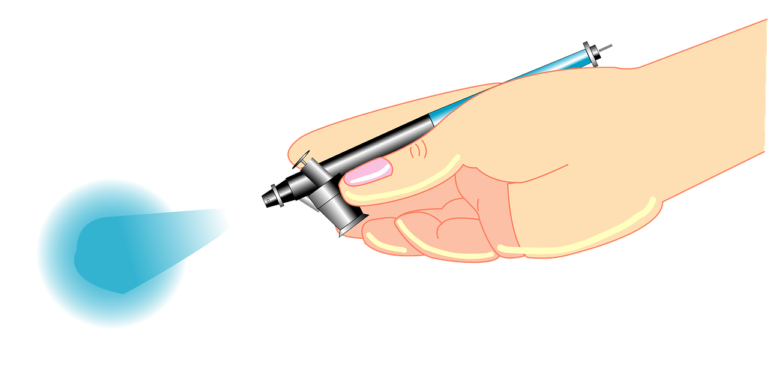How to Paint Over Non Paintable Caulk
If you have a caulk-sealed section at your home or office and you intend to paint; then, you will notice that not all caulk material is paintable. Some caulk sealants like silicone caulk have low paint adhesive contact and hence peels easily upon application.
On how to paint over non-paintable caulk – select the material and tools required, choose appropriate caulk for your surface, clean caulk sealed area, and prime the surface (where necessary) before the actual painting.

Besides, you may need to replace non-paintable silicone caulk from joints (not easy) with paintable caulk to improve paint stickiness action or consider using shellac spray and paint over non-paintable caulk surface.
Upon paint application, leave the first coat to dry (as per manufacturer’s instructions) before applying a second coat, if necessary. Importantly, adhere to precautions and safety measures highlighted in this article when painting, for safety purposes. Remember, wearing safety gear is paramount.
Details: How to Paint Over Non-Paintable Caulk
Whether bathroom, restroom, or laundry room; caulk material gets dirt, aged, and even damply and needs to be replaced or painted. The materials and tools required are:
- Sealant remover and Bleach
- Shellac spray and paint – latex or oil-based
- Soft bristle brush and putty knife
- Overall, ladder and safety goggles
- Paint Scraper and water point
- Pliers and Sander/polishing machine
- Respirator and Primer
- Gloves and fine-grit sandpaper
- Pressure washer and mineral spirit
Step 1: Selecting the right caulk option
When painting over non-paintable caulk, consider the primary caulk type for easier paint selection and primer matching. The caulk may be classified as:
a. Silicone Caulk
Silicone caulk forms a tough adhesive force, which is resistant to both water and paint molecules. When painting over silicone caulk, the solid adhesive lining must be removed and replaced with a paintable caulk option.
Silicone caulk is mold and mildew resistant and thus suitable for damp and wet areas. However, the removal process (during paint restoration) is a bit cumbersome and thus careful approach should be put in place.
Alternatively, you can channel along the silicone caulk joints and spray the lining with shellac (to boost adhesive bond) before paint application.
b. Adhesive Caulk
Adhesive caulk is best used for ceramic and wood tiles – it’s highly elastic, paintable, and durable.
Adhesive caulk is more comfortable to remove and replace. When painting over adhesive caulk, you only need to match the primer with the finished paint coat.
NB: Adhesive caulk is best for drywall flooring and a humid-free environment – it’s susceptible to mildew or molds if not attended.
c. Latex Caulk
Latex caulk is best for interior painting options – it’s highly penetrative and forms a strong adhesive bond with paint solvent.
With latex caulk, you will seal doors and windows spacing without any challenge. Besides, Latex caulk is more comfortable to remove and replace during paint reinforcement.
Silicone caulk is non-paintable and should be replaced with paintable caulk type when painting your surface to improve paint stickiness action and eliminate peeling and scuffing.
See Also: Belt Sander for Deck
Step 2: Cleaning Over Non-Paintable Caulk
- Wear protective gear – gloves, overalls, boots, safety goggles, and respirator – for personal protection
- Using a rag or mop, wash the caulk sealed surface to remove dust and surface debris
- Dilute mineral spirit/bleach (as per manufacturer’s instruction)
- Using a soft-bristle paintbrush, apply mineral spirit over the silicone caulk surface until the entire area is covered
- Leave the caulk to quench for two hours or otherwise advised by the manufacturer
- Gently, scrub the old paint and silicone caulk from the surface using a paint scraper – be careful not to damage the tiles or adjacent primary surface material
- Add soap detergent to warm water in a bucket and wash the caulk scrubbed section
- Repeat the steps above until the entire silicone caulk is removed
- Further, flush water over the entire surface (using a pressure washer) to attain a quality finish
NB: When removing silicone caulk, be careful not to pull out the entire tiles or surface material – the removal process intends to create a space for paintable caulk.
See Also: Penetrating Concrete Sealer
Step 3: Refill the Joints and Polish
- Using a putty knife, refill the cleaned non-paintable caulk surface with paintable caulk – could be latex caulk, adhesive caulk, or acrylic caulk
- Seal the joints completely and clear excess by use of a paint scraper
- Leave the filled caulk to dry as per the direction given by the manufacturer
- Connect the polishing machine to the power and switch on
- Gently, polish the caulk sealed joints to attain a smooth finish – be careful not to damage adjacent material. Alternatively, you can sand the joint surface using fine-grit sandpaper (80 t0 120 grit).
- Blow off their surface debris and dust – using a blower
- Rinse the surface to dryness
See Also: Exterior Paint to Prevent Mold
Step 4: Prime the Surface
- Pour oil-based or water-based primer into an empty bucket and thin appropriately – as per manufacturer’s instructions
- Using a narrow bristle paintbrush, apply the primer over the caulk sealed surface
- Repeat the previous step until the whole section is completely primed
- Leave the primer to dry naturally – one or two hours
Step 5: Prepare and Apply Final Paint
- Pour oil-based paint into an empty bucket and thin accordingly
- carry out a drop test experiment to ascertain the quality of thinned paint before the actual application
- Using a narrow paintbrush, apply finish paint gently – avoid overload the paintbrush to prevent drains or runs formation
- Repeat the previous steps until the entire surface is completely covered
- Leave the painted surface to cure for 2 to 5 hours or otherwise depicted by the manufacturer
- Then, apply the second paint coat (if need be) to improve the strength of the paint layer
- Leave the final coat to dry
NB: Cover the finish coat if the environment is dusty (prevents dust strain).
Step 6: Quality Finish
For quality paint finish, you may need to seal the painted area (with acrylic seals or vinyl) to prevent joint breakage and eliminate peeling action in a humid environment.
Externally painted caulk should be sealed with UV-rays resistant sealants upon paint application.
NB: Upon cleaning the top silicon caulk layer (non-paintable caulk), you can opt to spray the surface with shellac (acts as a primer) before painting.
However, you must match shellac with the right acrylic or latex paint for compatibility purposes. Read Also: Paintbrushes for latex paint.
How do You Remove Non-Paintable Caulk?
If you intend to reinforce your non-paintable caulk like silicone caulk, a complete removal is crucial and this should be done with critical care to safeguard tiles from damage.
During the removal process, follow the steps highlighted below: The material and tools required – Safety Glasses for Spray Painting.
- Gloves and Abrasive pad
- Bleach and Sealant remover
- Utility knife and Needle-nose pliers
- Clean cloth and Scraper or putty knife
Steps to Follow
- Wear protective gear (gloves, dust coat, respirator, boots, and safety goggles) for your personal safety
- Gently, push the utility knife through the silicone caulk joint and run/cut through the joint slowly – be careful not to slide cut yourself
- Pass the utility knife along the other joints and cut through the silicone caulk too.
- Cut another strip alongside the initial cut
- Using needle-nose pliers, grip the cut silicone caulk and pull it gently
- Cut another strip alongside the other bends and proceed along with the other tiles – this may not be easy
- Drip sealant remover along the stripped channel to penetrate into the silicone caulk and beneath the tiles
- Repeat the previous step for the other tiles and leave the sealant remover to cure as per the stipulated time
- Gently, grip the tile with a needle nose plier and shake slightly to remove it from the surface contact – be keen not to break the tile. Usually, a well-cured tile should come out after several slight shakes.
- Alternatively, past the putty knife along the tile edges and try to push off the tile gently – this method is a bit tricky as at a point leads to tile’s edge damage
- Once the tile is removed, scrape off the cured silicone caulk from the surface (gently) with a paint scraper or putty knife
- Then, scrub the surface with an abrasive pad before rinsing it with a wet piece of cloth
Once the tile and the surface wall/floor is dry to touch, you can apply the paintable caulk (latex caulk, acrylic caulk, or adhesive caulk) before sticking the tile back to its original position. Moreover, a professional painter should be contracted if you are new to non-paintable caulk.
Alternatively, you may opt to groove the tile joints and replace non-paintable caulk (silicone caulk) with paintable caulk options. However, the paint stickiness level may be lower than the entire silicone restoration.
See Also: Paint Roller for Textured Walls
Caution/Warning!
- Remember to bleach the joint after removing silicone in order to prevent the growth of mildew and molds
- Use a scraper when removing dry silicone caulk to prevent tile breakage
- Drywall should be quenched thoroughly before scrapping is done to prevent primary surface material from damage – scratches
- For indoor caulk removal, proper ventilation should be done since sealant remover and bleach emit fumes that may irritate your respiratory system when inhaled
Precautions When Painting over Non-Paintable Caulk
Precautions and safety measures are paramount when painting non-paintable caulk as they boot personal safety and eliminate environmental hazards. Stick to safety measures and precautions given below:
- Before starting a painting activity, wear protective gear for your personal safety.
- Avoid inhaling caulk remover or bleach directly as it may contain poisonous fumes, which will cause respiratory discomfort.
- Be careful when holding tiles during the caulk reinforcement process –tiles are brittle and often break if wrongly pushed/pulled
- Before primer or paint application, carry out a drop test experiment to ascertain the stickiness quality.
- When removing the non-paintable caulk, be careful not to slide cut yourself – it’s a common injury.
- Wear gloves when applying bleach to protect your hands from burning. In case you get into contact with bleaching solvent, wash the area with plenty of water and soap.
- Always check the type of caulk you intend to use before sealing as it helps you determine the finish paint to use.
- Match the primer with finish paint always – oil-based paint should be primed using oil-based primer and vice versa.
- Always check the expiry date of the primer and finish paint before preparation is done.
Clean debris and waste from painted surfaces and dispose of them accordingly.
See Also: Ladder for Painting 2 Story House
Conclusion
In summary, on how to paint over non-paintable caulk, you begin by selecting the material and tools required, choose appropriate caulk for your surface, clean caulk fitted area, and prime the surface (where necessary) before the actual painting.
Besides, you may have to replace non-paintable silicone caulk from joints (not easy) with paintable caulk to improve paint stickiness action or consider using shellac spray and paint over non-paintable caulk surface. Upon paint application, leave the coat to dry (as per manufacturer’s instructions) before applying the second coat, if necessary.




